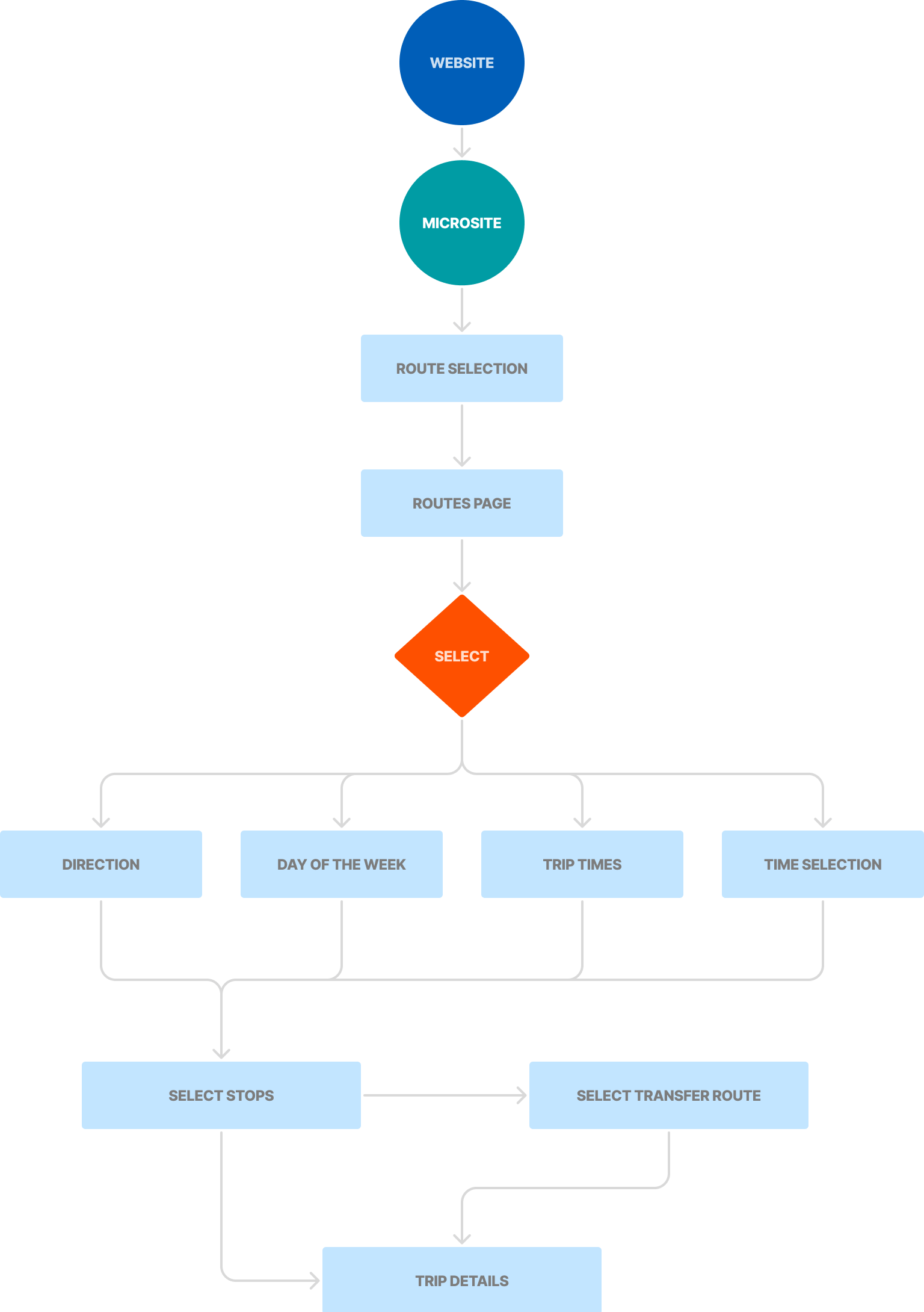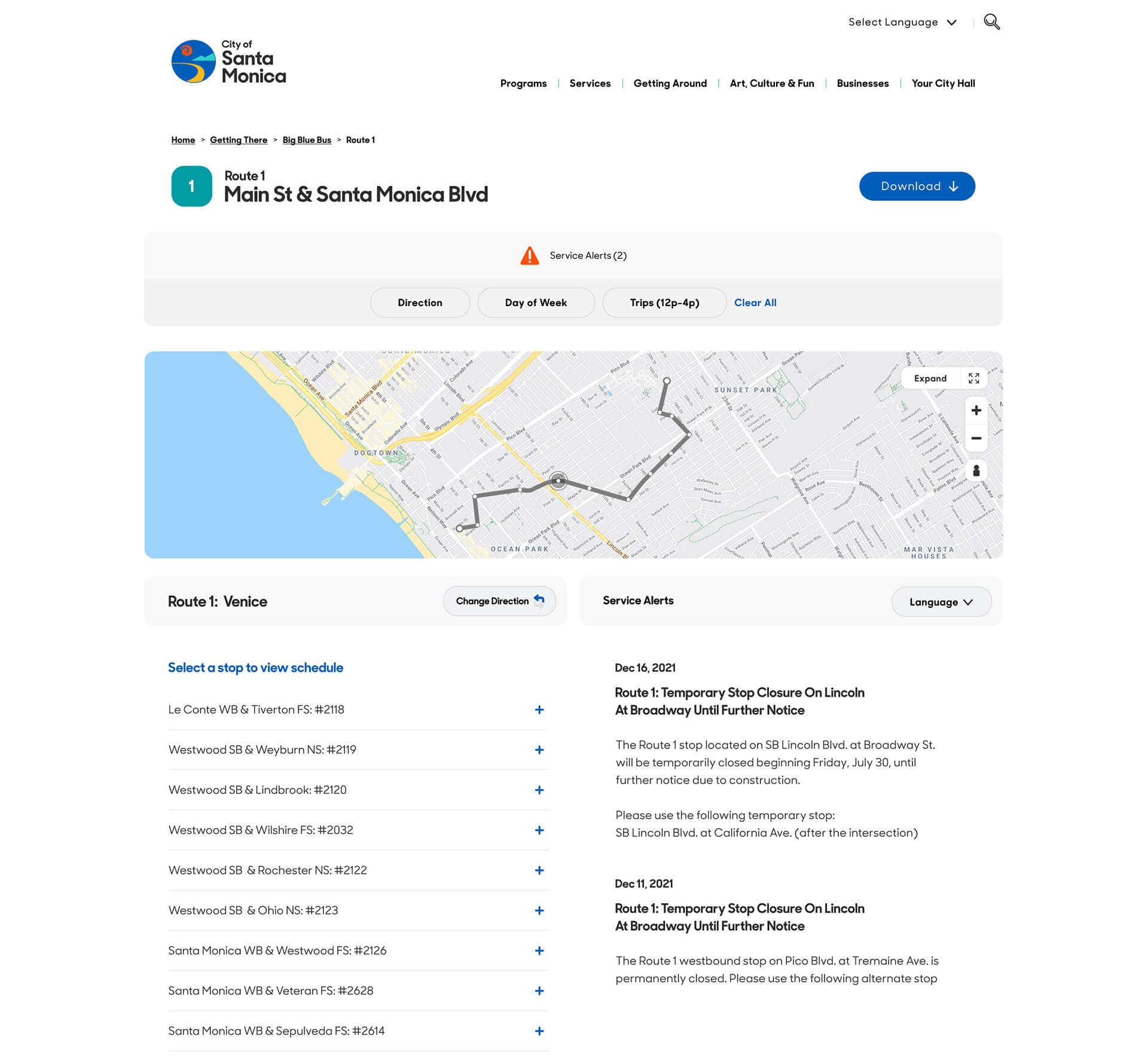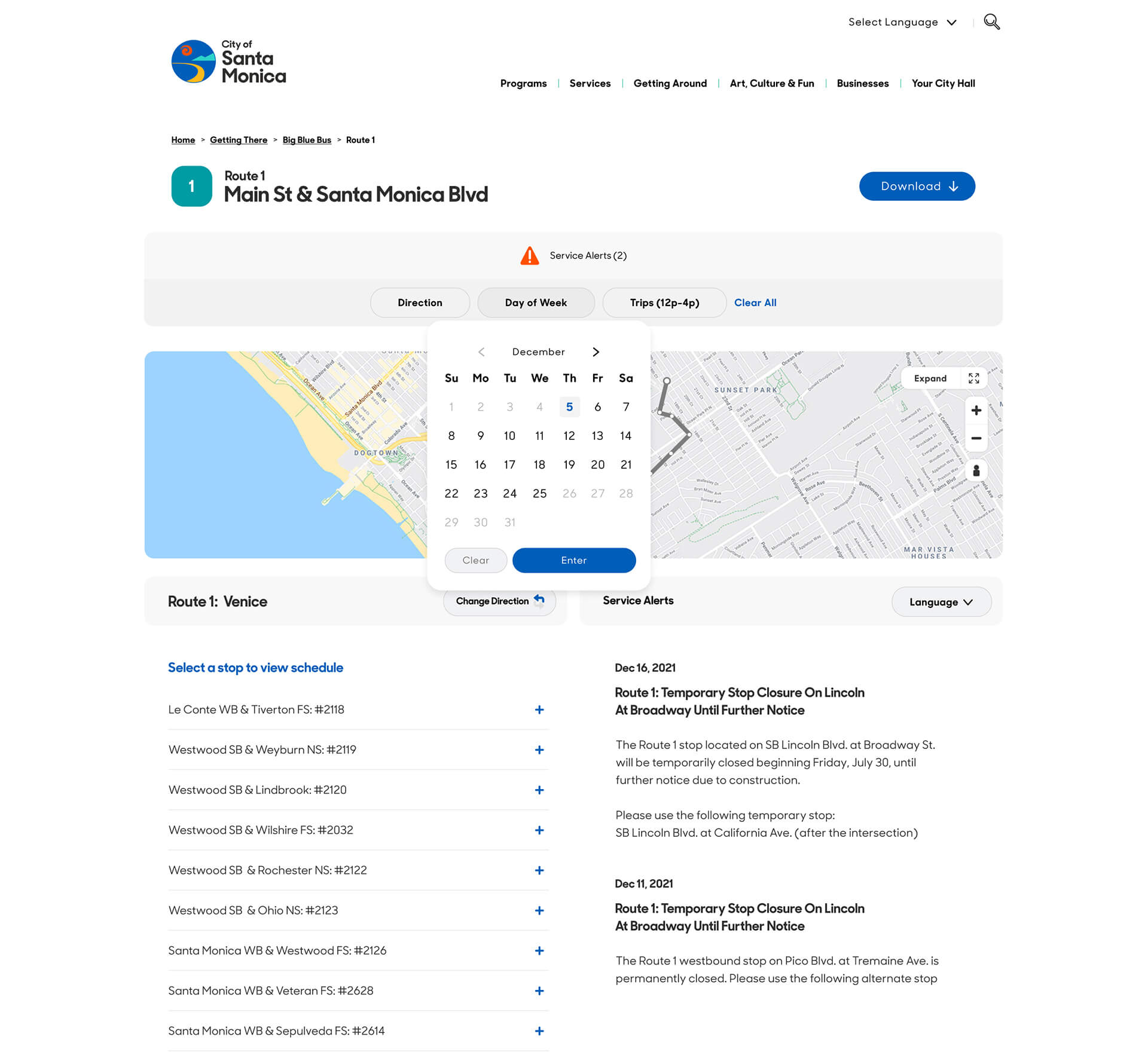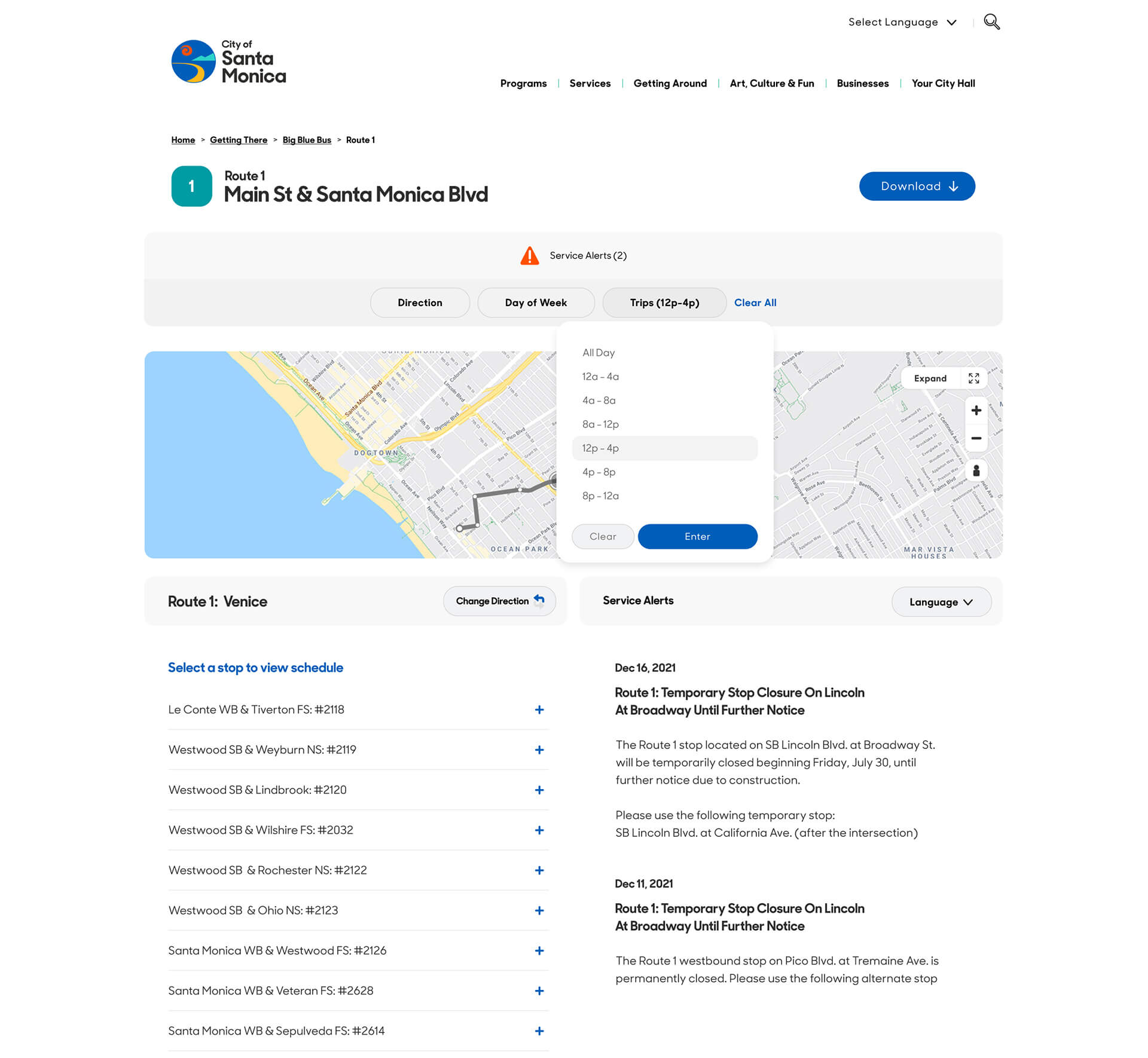


The City of Santa Monica looks at the Big Blue Bus system as a vital transportation lifeline for students, workers, seniors, and environmentally conscious residents. The challenge was to design an integrated digital experience for accessing real-time route information and trip planning tools that meets the needs of its diverse ridership.
The proposed microsite aimed to deliver a seamless mobile experience, improve route personalization and alerts, strengthen accessibility/inclusivity, enhance multimodal trip planning, support community engagement and leverage open transit data for innovation.
Through interviews with participants, clients and stakeholders, we gathered valuable insights to better understand and empathize with the needs of our target audience. This allowed us to dive deeper into defining the project's challenges.
The team at SCPXL went through the process of rapidly visualizing, testing and refining thoughts and ideas before the development process. Below is a glimpse of how we defined the vision of the user's journey throughout the experience by highlighting decision points, loops and any potential friction areas.

To help the team determine the priority of information, I designed the placement and layout of content in wireframe form which allowed for rapid iteration, feedback and discussions.
Once approved, I developed the wireframes into a working prototype to help simulate user interaction with the product and address any potential pain points discovered throughout the early stages.

The proposed microsite featured a clean, mobile-first design centered around a live interactive map, allowing users to quickly locate buses and nearby stops. Branded in signature blues with high-contrast, the visual language of the experience focused on accessibility-first elements for inclusive use across all devices. Route cards were created to display live updates, ADA accessibility, and service alerts in real time.
A smart, swipe-friendly interface were kept in mind to ensure quick, confident decisions for riders of all ages, making public transit more reliable, visible, and rider-friendly. With multilingual support, smart notifications, and a user-centered layout, the microsite would empower riders to travel confidently, stay informed, and rely more easily on public transit.

primary
secondary
accent
warning









